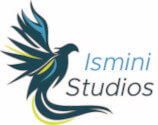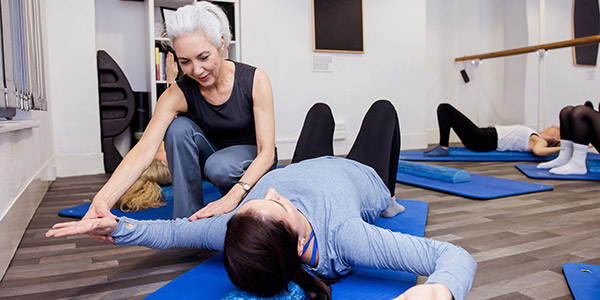Do you feel able to move freely or are you always worried that you are going to cause yourself “damage”?
I’m here to help you feel safe in your body and to teach you that movement is the key to your transformation.
When we talk about movement, most people think of strengthening, becoming flexible and better aligned, whether it’s through weight training, Pilates, Feldenkrais or any other movement practice. But there’s something much deeper that needs to be considered first and that’s our sense of safety and trust in our body.
Why? Because without feeling safe in yourself, movement can feel scary, particularly if you are in a state of chronic pain. Students often tell me,
I’m too scared to exercise on my own at home in case I do it wrong and do more damage.
How can you explore your body’s full potential if you are living in fear rather than safety? Here’s why I focus on helping you feel safe and not just on strength and flexibility in my classes.
1. Safety Leads to Presence and Awareness
To move with ease and fluidity, you first need to be present in your body and to be able to focus on yourself. Presence doesn’t come from doing hard core strengthening programmes or ticking off a list of exercises or forcing movement. Presence comes from learning to feel the tiniest of movements to help you become grounded, supported, and safe. You can only do that when you learn to focus and pay attention.
When safety is the foundation, every movement is an opportunity to tune in — not just to physical sensations, but also to your emotions, your breath, and your mindset. This connection allows you to make changes from a place of clarity and understanding, rather than just following directions or trying to “do it right.”
2. Movement is a conversation of sensing and feeling
When you don’t feel safe and you feel afraid, every movement feels like a risk and you end up holding your breath, or bracing, or avoiding certain exercises altogether because you’re fearful of injury or feeling discomfort. However, you free yourself of fear when you become more aware of your body’s ability to move.
Feeling safe isn’t just about avoiding certain movements; it’s about nurturing an internal environment where you can sense and notice your habits so you can adjust, adapt, grow and create new more efficient habits. The more you learn to listen to your body’s ability to move and trust that you can perform a movement without force, the more you will free yourself of pain.
3. Creating Space for Experimentation of Movement
When we talk about movement, it’s easy to get caught up in the idea of “Am I doing it right” or trying to get the perfect form. What if I told you that true growth comes from exploring and giving yourself permission to play with different movements; to slow things down and make movements smaller knowing that there is no right or wrong.
By experimenting in this way you’ll begin to learn what your habits are; how you carry your weight through your legs, or how you might slump to one side always when you sit. Then you begin to realise that movement offers you a valuable opportunity to learn more about yourself and your movements.
Without the ability for self-discovery, fear takes over, and movement becomes stiff and rigid, often leading to pain. The smaller the movement the safer you feel, allowing you to open the door to your body’s unique range and potential.
4. Consistency is Key
You might push yourself to do something if you’re motivated, but if it feels unsafe or uncomfortable in your body, you won’t stick with it for long. Consistency in movement is key to long-term change, and consistency is rooted in safety. When you feel safe in your body, you can move more regularly and with more ease, because you’re not worried about injury or discomfort.
The more you can build a sense of safety, the more your practice becomes part of your lifestyle, rather than something you have to “force” yourself to do. The benefits of consistent practice is improved posture, greater flexibility, better strength — we need all of these to be balanced and only then will you to have the potential for a pain-free life.
5. A Foundation for Healing and Prevention
Whether you’re recovering from an injury or just trying to move better, the first step is always creating a safe space in your body. Without this you will remain in a state of tension and protective compensation. This prevents you from fully healing or properly learning how to move with more ease and efficiency.
By focusing on awareness, you create a safe environment within yourself so that you can heal your pain. As you learn to feel and sense movement you will learn to prevent future injuries and gradually allow yourself to move with more freedom.
Contact Ismini Studios
In Closing
Movement is more than just reaching a goal. It’s about reconnecting your nervous system to your skeleton so you create a relationship within yourself based on trust, awareness, and exploration. Feeling safe in yourself allows you to truly connect with yourself, without fear or limitation.
Only then can you confidently build strength, flexibility, mobility and balance — both physically, emotionally and psychologically.
So, next time you come to class, come with a feeling of curiosity rather than apprehension, a sense of awareness rather than fear, and prioritise exploring how movement invites you to understand your habits so that you can then work on strength, flow and flexibility.
In time, you’ll come to notice that your everyday movement is easier, lighter and more efficient — and you’ll wonder why you didn’t trust in yourself, your nervous system from the outset.

Find out how it feels to become a Pilates student – come along to a class.



